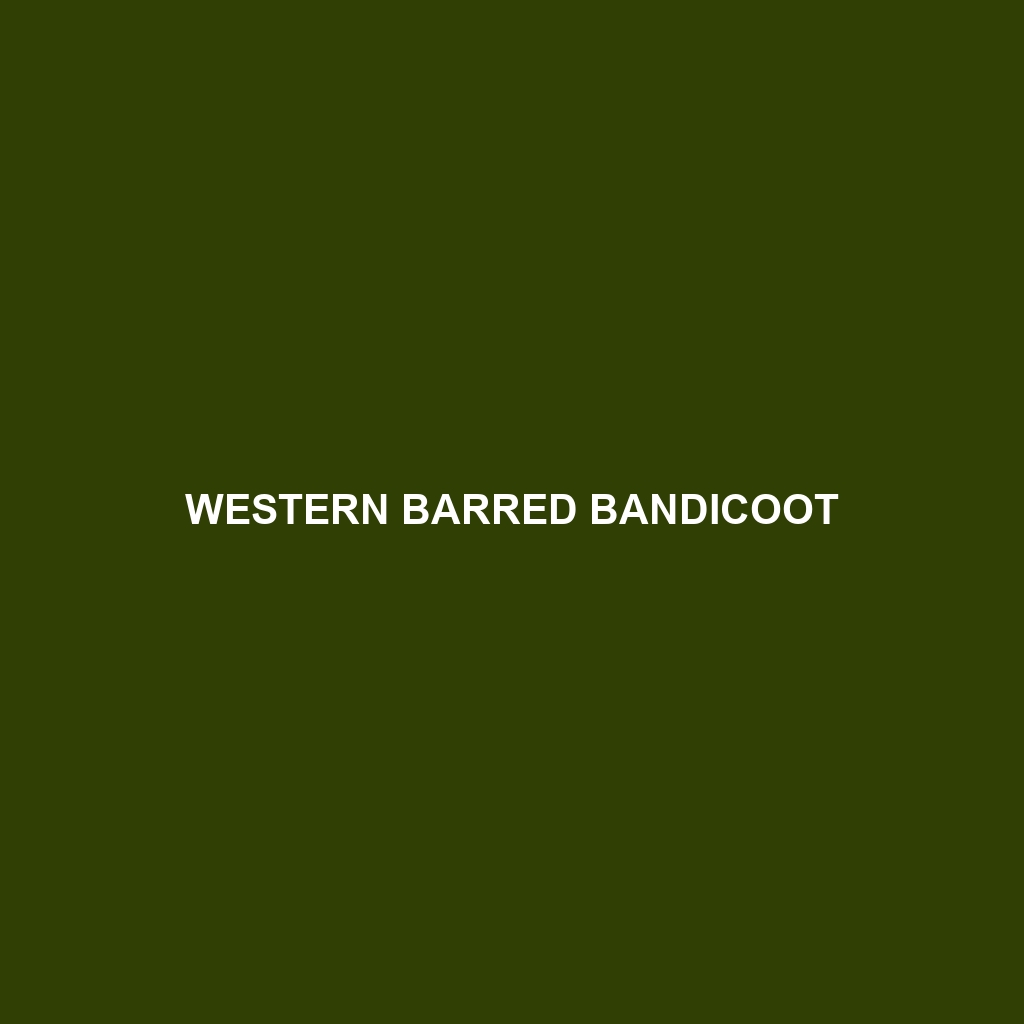Western Barred Bandicoot (Perameles bougainville) Overview
The Western Barred Bandicoot is a small, nocturnal marsupial native to Australia. This elusive creature is known for its distinctive banded appearance, nimble movements, and solitary lifestyle. As a species previously widespread across the Australian mainland, it is now primarily found on select offshore islands due to habitat loss and predation pressures.
Physical Characteristics
Size: The Western Barred Bandicoot is relatively small, typically measuring about 20-28 centimeters in body length, with an additional tail length of 7-13 centimeters. They usually weigh between 160-225 grams.
Coloration: Their fur is sandy or grey-brown on the upper parts, with lighter, often white, underparts. The distinctive feature is the dark, horizontal bars or stripes that run across their hindquarters.
Special Features: They have a pointed snout, large ears, and sharp claws that are well-suited for digging. Their hind legs are slightly longer than their forelegs, making them agile jumpers.
Behaviors
Social Interactions: Western Barred Bandicoots are largely solitary creatures, coming together only for mating. They are territorial and can be quite aggressive towards intruders of the same species.
Feeding Habits: These bandicoots are omnivorous, feeding on insects, larvae, small invertebrates, and a variety of plant material including seeds and tubers. They use their keen sense of smell to locate food and their claws to dig it out.
Ecological Roles: As ground-dwelling insectivores, they play a crucial role in pest control and soil aeration through their digging activities.
Habitat and Adaptations
Habitats: Historically, Western Barred Bandicoots inhabited a range of environments from woodlands to scrublands. Currently, they are predominantly found in predator-free island sanctuaries such as Bernier and Dorre Islands off the coast of Western Australia.
Adaptations: To thrive in arid environments, they have adapted to extract moisture from their food, reducing the need for free water sources. Their nocturnal nature helps them avoid daytime predators and extreme heat.
Conservation Status
Status: The Western Barred Bandicoot is classified as Endangered by the IUCN Red List due to habitat destruction and predation by introduced species such as cats and foxes.
Conservation Efforts: Conservation initiatives include habitat protection, captive breeding programs, and reintroduction projects. Predator control measures are also crucial to their survival.
Fascinating Fun Facts
Reproduction: Females have a short gestation period of just 12 days, one of the shortest among mammals. They can give birth to multiple litters per year.
Nesting: They build shallow nests in the ground lined with grass and leaves, which they camouflage by pulling the surrounding vegetation over the entrance.
Historical Range: Fossil records indicate that the Western Barred Bandicoot once had a much wider distribution across mainland Australia before European settlement.
The Western Barred Bandicoot is a remarkable example of the diversity and resilience of Australia’s unique wildlife. Despite facing significant challenges, ongoing conservation efforts provide hope for the future of this charming marsupial.
